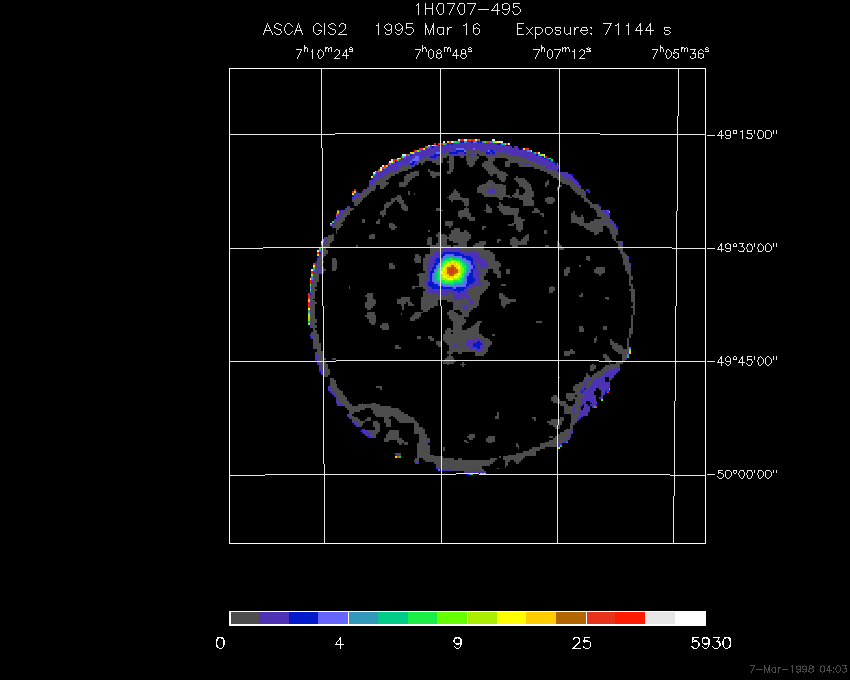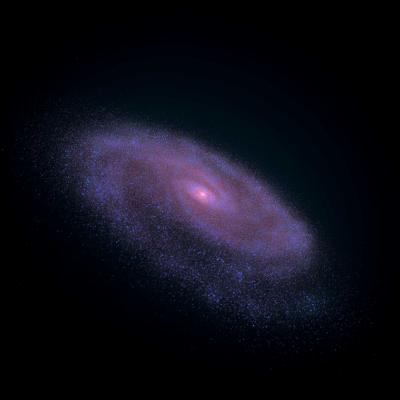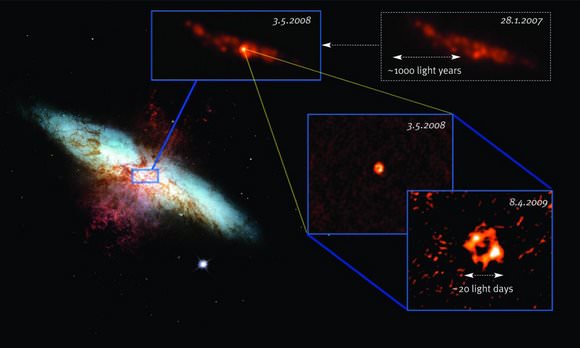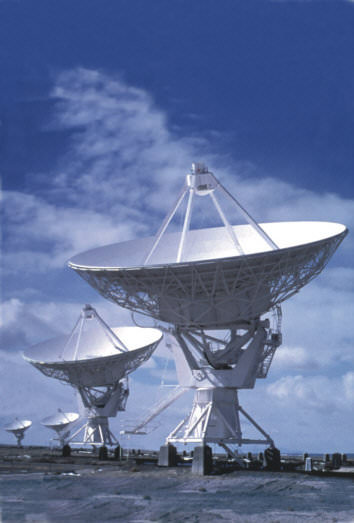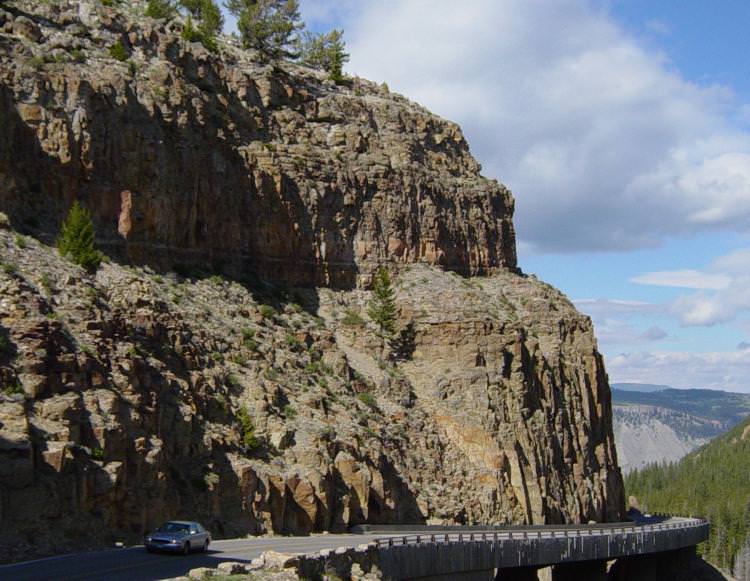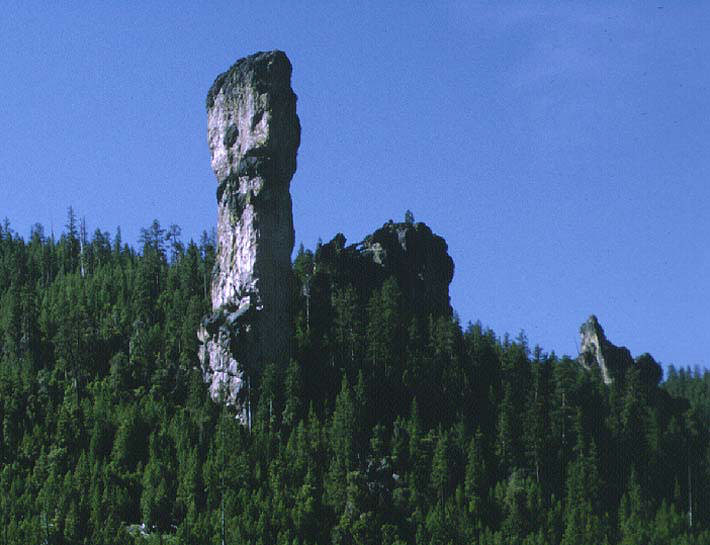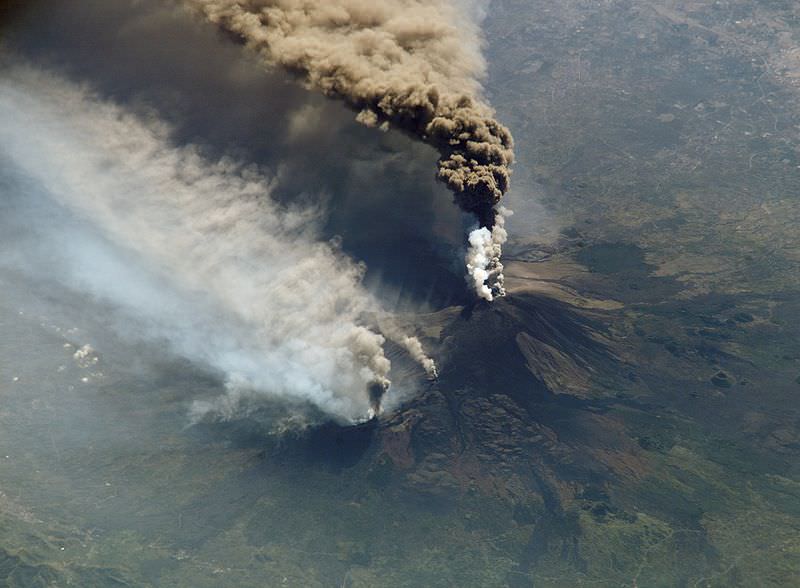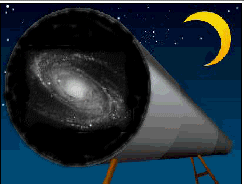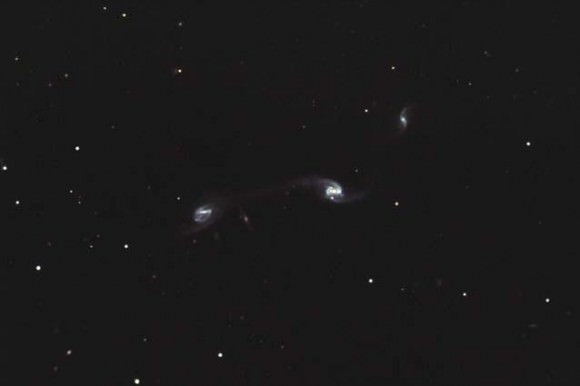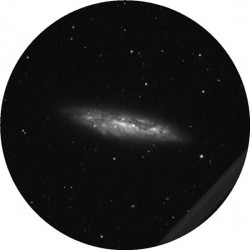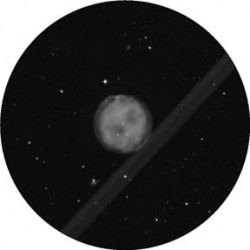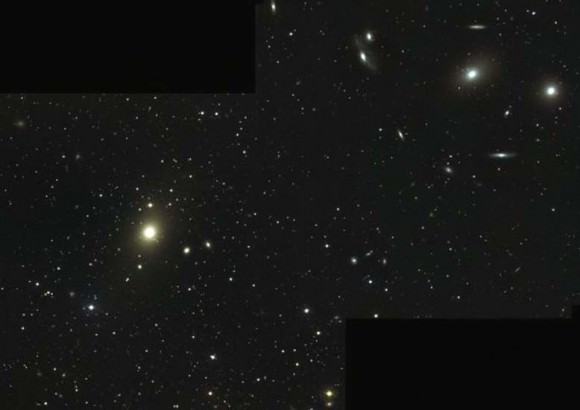[/caption]
Astronomers have probed closer than ever to a supermassive black hole lying deep at the core of a distant active galaxy that was once thought to be shrouded in dust — which will greatly advance the look captured in this NASA file image from the mid-1990s. Using new data from ESA’s X-ray Multi-Mirror Mission (XMM)-Newton spaceborne observatory, researchers peered into the innermost depths of the object, which lies at the heart of the galaxy known as 1H0707-495.
“We can now start to map out the region immediately around the black hole,” says Andrew Fabian, at the University of Cambridge, who headed the observations and analysis.

The galaxy — known as 1H0707-495 — was observed during four 48-hr-long orbits of XMM-Newton around Earth, starting in January 2008.
X-rays are produced as matter swirls into a supermassive black hole, illuminating and reflecting from the matter before eventually accreting into it. Iron atoms in the flow can be observed in the reflected light, affected by the speed of the orbiting iron atoms, the energy required for the X-rays to escape the black hole’s gravitational field, and the spin of the black hole. All these features indicate that the astronomers are tracking matter to within twice the radius of the black hole itself.
XMM-Newton detected two bright features of iron emission in the reflected X-rays that had never been seen together in an active galaxy. These bright features are known as the iron L and K lines, and they can be so bright only if there is a high abundance of iron. Seeing both in this galaxy suggests that the core is much richer in iron than the rest of the galaxy.
Statistical analysis of the data revealed a time lag of 30 seconds between changes in the X-ray light observed directly, and those seen in its reflection from the disc. This delay in the echo enabled the size of the reflecting region to be measured, which leads to an estimate of the mass of the black hole at about 3 to 5 million solar masses.
The observations of the iron lines also show that the black hole is spinning very rapidly and eating matter so quickly that it verges on the theoretical limit of its eating ability, swallowing the equivalent of two Earths per hour.

